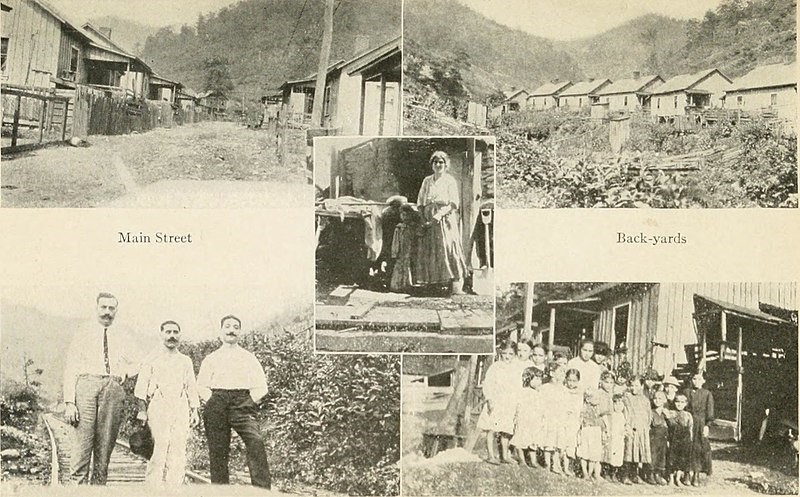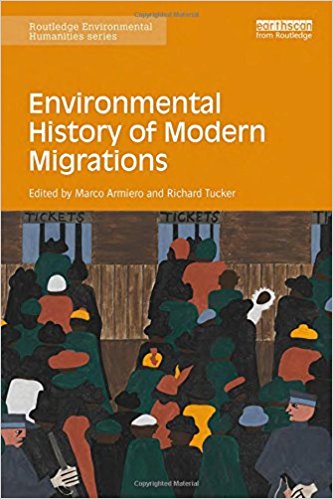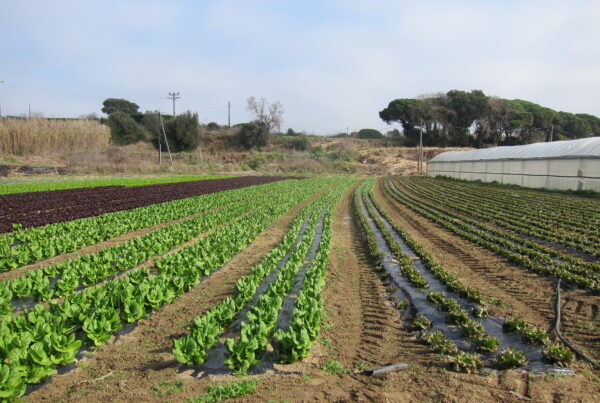by Marco Armiero
In a new book, Marco Armiero and Richard Tucker have edited together important contributions to the emerging field of the environmental history of modern migrations. Three main ‘styles’ of research delineate the contours of a timely research effort.
Histories in the Present Tense
We are in the midst of a massive migration crisis when Europe is transforming itself into an impenetrable fortress. The times when walls were falling and barbed wires removed seem so far away. Everywhere rich nations are trying to isolate themselves from the waves of desperate people fleeing from wars, poverty, persecutions, and disruptive environmental changes. “A wall will save us!” this is the easy mantra repeated by the professionals of fear, the gardeners of the new and pernicious hate plantations.
Xenophobia, racism, and nationalism are gaining terrain, breeding on a toxic narrative which redirects class conflicts towards the “outside”. According to this narrative, if in the Global North the working class is becoming poorer, is because of immigrants and not for the unequal distribution of wealth, the attack against workers’ rights and the neo-liberal erosion of the welfare state. When hard times come, having an “other” to blame has always been a handy resource in order to preserve the privileges of the few.
The rise of terrorism has aggravated this situation with a continuous overlapping, in the public discourse, of migrants and terrorists. An exotic name does all the work here; the fact that often the terrorists were born and raised in the West is easily buried under the inflammatory rhetoric of the new right-wing nationalists.

Source: Cole Patrick
Lampedusa, Idomeni and Ventimiglia are the centers of a new geography of Europe, places which embody the fact that migration, borders, and bodies intertwine, creating a political ecology of humans’ movement and state’s control (Turhan and Armiero 2017). Routes of hopes and desperation crisscross the Mediterranean; acts of violence and disobedience dot the fortified borders of Europe.
The situation is not different in the United States and in Australia, where similar fears are agitated in the public discourse deeply affecting the political agenda of those countries. A simple textual analysis of the 2016 American presidential campaign could prove beyond any reasonable doubt that migration is a keyword in the public discussion.
In the face of all this, it should be clear why an environmental history of migrations (hereafter EHM) is needed. Environmental History was born — at least as a self-conscious disciplinary field — with a strong connection to the ecological movement raising especially in the US society in the 1970s. As the New Social History, also Environmental History looked at what was happening outside the university’s walls, conceptualizing its function as the study of the past in order to address the challenges of the present. In this sense, dealing with migration means to go back to the very roots of Environmental History as an intellectual project, we might say that it implies to reinforce the political effort of a field which, while gaining academic prestige, sometimes seems to have lost its militant soul (Armiero 2016).
The connections between migration and the environment may not be self-evident; nonetheless, there is a growing body of literature as well as a wider narrative in the public discourse which are enhancing the reflection on this theme. The most fertile terrain where migration and environment have met is that of climate change induced migration. Scholars, policy-makers, journalists, the military complex, writers and artists, NGOs and the general public have engaged with the issue of the so-called climate refugees. From the IPCC reports to the biblical migrations of a catastrophe blockbuster movie as “The Day After Tomorrow,” and from the 2008 National Intelligence Council’s assessment to European Union-funded research programs, the idea that climate change will cause massive and ominous movement of people has increasingly gained authority (see for instance Bettini 2013; Baldwin 2014).
Although everyone would agree that significant climate change will imply the migration of the most vulnerable people, it is more controversial to establish a direct and unequivocal cause-effect connection between the two. In other words, defining climate change migrants might be a difficult task, especially since this is not only a matter of academic disquisitions and it might have a legal implication connected to the ongoing debate on the status of people seeking asylum in the Global North. The ghost of the climate refugee is haunting fortress Europe, and for what matters fortress Australia as well; it continuously reappears in the pages of scholarly works and policy briefings.
The temptation to reduce everything to some ecological truth might be strong among those who believe that nature matters in humans’ affairs. Wars and poverty, two crucial causes of migration, can also be explained as consequences of environmental — more specifically climate — change. Is this the task for environmental historians? Are we supposed to concur in demonstrating that migration is caused by environmental — better off climate — changes? Definitely, we need a wider and less deterministic research agenda. Rather than isolating the environmental, searching for the supposed clear ecological causes — or effects — of migration, the challenge is to think ecologically of the processes which have led to — or spring from — migration. Connecting rather than isolating should be our research mantra.
EHM: a Toolkit
How can an environmental history of modern migration be done? In which directions should this new field go? For the sake of clarity, in our volume we have proposed three possible paths, or styles: the assertive style, the constructivist style, and the embodied style. Those are ideal-types which, rather than being mutually exclusive, many times are blended in the empirical work of researchers.
The Assertive Style, or Strange Pioneers on the Frontier
EHM may aim to uncover the contribution of migrants in the making of the landscapes where they settled. The connection to the studies of empires and colonial expansion of Europe is evident. Since the beginning of the discipline, environmental historians have researched the ecological transformations imposed by the imperial arrangements of the world. Looking at migrations, especially in the age of mass migrations, means to enlarge that kind of studies beyond the limits of the colonial settings.
Those limits are not only chronological — mass migrations arrived later than the age of the first colonial expansion — but they are also inherent to the nature of Empire. The military support of the Fatherland, the expropriation of natives’ lands, and the construction of a legal and institutional system at the service of the colonizers’ interests were the basis of the imperial movement of people. The late 19th and early 20th century migrants did not have that kind of cargo and by and large did not have such a close encounter with natives, but rather with other ethnic groups or the descendants of the colonizers. The risk of celebration is rather strong in the assertive style; easily, EHM can embrace a research agenda aiming to prove that immigrants were also pioneers, contributing to the taming of “nature”.

Portrait of the Boff family in their household (Source: Wikimedia)
The Constructivist Style, or Seeing the Environment through Others’ Eyes
Migrants not only shaped the environment where they settled; they also saw it in different ways, applying categories and visions which belonged to their own cultures or which emerged in the migratory experience. In many cases they were able to shape the environment because they saw it differently, recognizing in it things that others could not see.
In the very process of making sense of the environment, migrants transformed it, or at least affected it, and, as we will see later, changed themselves.

An Italian mining town: Boomer, West Virginia (Source: Wikimedia)
What were the Italian backyards, full of vegetables, rabbits and chickens, if not a different appreciation of land and natural resources and a porous space blending work, living and leisure times? Actually, it was precisely this porosity in immigrants’ practices of the environment what was intolerable for the Anglo-Saxon conservationists, who often blamed — and sometimes still do — foreigners for environmental problems (on this see Hartmann 2010; Rome 2008; Park and Pellow 2011).
The constructivist style can contribute to urban environmental history by rethinking ecologically the ethnic enclaves, exploring how immigrants understood and activated urban commons, including garbage, a space traditionally occupied by immigrant workers.
The Embodied Style, or the Nature of/in the Immigrant’s Body
Migrants are themselves nature on the move. This was true not only during the early years of the Columbian or Magellan exchange. People continued to cross the oceans bringing with them their bodies, their resistance or weakness to pathogenic agents, their ability to cope with different climate and food. EHM needs to break the boundaries between bodies and nature.
Thereby, EHM must join forces with those environmental historians who have contributed to renovating the field, calling for attention to the connections linking work, ecologies, and health (Barca 2014; Montrie 2008; Mitman 2005; Nash 2006; Sellers 1999). This is not only a movement inside the Environmental History field, but it also comes strongly from civil society organizations, and especially from the Environmental Justice Movement. In this sense, it is the right time to foster the EHM agenda.

Public Health Service physicians checking immigrants arriving to the United States for signs of illness. (Source: Wikimedia)
Conclusions
Working on the environmental history of mass migrations might resemble the work of archaeologists. In both cases, the researcher is engaged in an excavation that aims to uncover what has been buried under layers of past epochs. However, when studying the landscape of migrations those layers are not so much arranged in strata but intertwined and blended with one another. They might look like the strange mix of Roman ruins and new buildings so common in many Italian cities.
In this sense the metaphor of the excavation might not work so well. While it does deliver the idea of making visible what has been hidden, it also implies a well delimited succession of strata which does not correspond to the reality of the hybrid landscapes created by immigrants. Actually, individuating an Italian, Chinese, or Serbian landscape might contradict the whole point of thinking in terms of metabolic relationships and socionatures.
How much were the vineyards Italian in California, in the face of the Phylloxera bio-invasion, or of the work of the Mexican laborers who prepared the land? Or how much was an immigrant landscape the coalfields of Colorado and Pennsylvania, where the hard work of miners, mostly immigrants, capital investments and interests, energy policies and technological shifts shaped the land and the bodies of people working and living there? The same could be asked for the urban environment where the marks of various ethnic communities — Little Italies or Chinatowns, for instance — spoke at the same time of immigrants’ agency in the city and their metabolic relationships with broader dynamics of urban political ecology as land rent, zoning, and gentrification. More than sealed layers in a succession, it seems a bricolage where what matters is the relationship among pieces, even more than the figure obtained through the assemblage. And, of course, the power and the resistance at play in the very making of that patchwork landscape.
Maybe the best metaphor to describe the kind of work the EHM should do comes from the experimental volume produced by Pulido, Barraclough and Cheng, A People’s Guide to Los Angeles. In the introduction they propose the image of the haunted landscape to describe the hybrid blend of invisible presences which peopled the places we live in: “Los Angeles is filled with ghosts—not only of people, but also of places and buildings and the ordinary and extraordinary events that once filled them” (4). This metaphor of the ghosts gives back the sense of the immigrants’ presence/absence into the landscape. As those ghosts, immigrants haunt the landscapes where they settled with traces which are embodied in the place even when they are completely gone. Many times, those traces are stories, because ghosts’ stories are what actually haunt the places.
Immigrants haunt as ghosts the landscapes where they settled. Their presence is in the shapes of the California farmlands, embedded into the energy systems fueling the industrial and post industrial societies, cooked with food, inscribed in the urban texture, mixed with blood, dust, and sick cells in the bodyscapes of exposures and exploitation which are also part of that history.
The figure of the ghost can also help us to overcome binary opposition between culture and nature or material and immaterial. Immigrants literally built the environment where they settled, making soil out of waste but also understanding the environment around them in ways that no one had done before. An environmental history of migrations and migrants should make peace with the fact that the environmental and the social are never apart. With the right jargon, one might say that they are mutually constituted in socionatural formations. But I prefer to say that they haunt each other, never leaving a place, a story, a landscape, a body alone.
This is an excerpt from M. Armiero and R. Tucker (eds.) Environmental History of Modern Migrations (Routledge 2017). For the Entitle Blog readers, there is a 20% discount (code EHM20).
Marco Armiero is an environmental historian and political ecologist. His main topics of study have been environmental conflicts, uses of natural resources, politicization of nature and landscape, and the environmental effects of mass migrations. he is the director of the KTH Environmental Humanities Laboratory at the Royal Institute of Technology, Stockholm.






Reblogged this on Political Ecology Network.
Reblogged this on VIRTUAL BORSCHT.